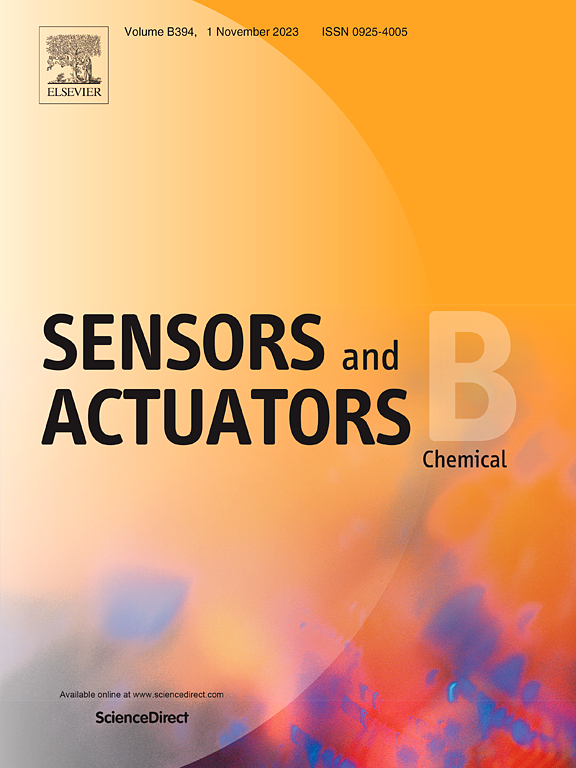A pH-responsive NIR fluorescent probe for precise cancer phototheranostics
IF 8
1区 化学
Q1 CHEMISTRY, ANALYTICAL
引用次数: 0
Abstract
pH is a key factor of many aspects of daily life and is strongly linked to cancer. Therefore, developing a reliable technique for measuring pH in tumors and looking for novel strategies to enhance tumor treatment efficacy is imperative. A stimulus-responsive phototheranostics platform that integrates imaging and multimodal therapies can effectively improve diagnosis and treatment outcomes. Herein, a pH-responsive and near-infrared (NIR) fluorescent probe featuring Mcl-1 targeting ability was deftly constructed for precise tumor-targeting NIR phototheranostics. The tridentate fluorescent probe, Cy-Nap, was crafted through a comprehensive molecular design strategy that integrated three key components into a single framework. This design included a targeting unit with high affinity for Mcl-1, a NIR-emitting heptamethine cyanine chromophore, and a pH-responsive segment featuring a piperazine ring that serves to link the other two elements within the molecular scaffold. Cy-Nap, an agent designed to be responsive to pH changes, exhibits improved production of reactive oxygen species (ROS) and superior photothermal capabilities under acidic conditions. Additionally, the Cy-Nap probe can be employed to perform intraoperative real-time imaging-guided tumor removal as well as noninvasive, precise NIR imaging of the lymphatic system. Harnessing its tumor-targeting properties, Cy-Nap successfully eliminated tumors in mice with induced tumors when treated with 808 nm laser irradiation, and this was achieved with minimal observable side effects. This work offers novel insights into the development of advanced, multifunctional phototheranostic agents for the therapeutic management of cancer.

用于精确癌症光疗的ph响应型近红外荧光探针
pH值是日常生活中许多方面的关键因素,与癌症密切相关。因此,开发一种可靠的肿瘤pH测量技术,寻找提高肿瘤治疗效果的新策略势在必行。结合影像和多模式治疗的刺激响应光疗平台可有效提高诊断和治疗效果。本文巧妙构建了一种具有Mcl-1靶向能力的ph响应型近红外(NIR)荧光探针,用于精确靶向肿瘤的近红外光疗。三叉戟荧光探针Cy-Nap是通过综合分子设计策略精心制作的,该策略将三个关键组件集成到单个框架中。该设计包括一个对Mcl-1具有高亲和力的靶向单元,一个发射nir的七甲基菁发色团,以及一个具有哌嗪环的ph响应段,该环用于连接分子支架内的其他两个元件。Cy-Nap是一种能够响应pH值变化的药剂,在酸性条件下表现出更好的活性氧(ROS)生成和优越的光热性能。此外,Cy-Nap探针可用于术中实时成像引导的肿瘤切除,以及淋巴系统的无创、精确的近红外成像。利用其肿瘤靶向特性,Cy-Nap在808 nm激光照射下成功地消除了诱导肿瘤小鼠的肿瘤,并且实现了最小的观察到的副作用。这项工作为开发先进的多功能光疗剂提供了新的见解,用于癌症的治疗管理。
本文章由计算机程序翻译,如有差异,请以英文原文为准。
求助全文
约1分钟内获得全文
求助全文
来源期刊

Sensors and Actuators B: Chemical
工程技术-电化学
CiteScore
14.60
自引率
11.90%
发文量
1776
审稿时长
3.2 months
期刊介绍:
Sensors & Actuators, B: Chemical is an international journal focused on the research and development of chemical transducers. It covers chemical sensors and biosensors, chemical actuators, and analytical microsystems. The journal is interdisciplinary, aiming to publish original works showcasing substantial advancements beyond the current state of the art in these fields, with practical applicability to solving meaningful analytical problems. Review articles are accepted by invitation from an Editor of the journal.
 求助内容:
求助内容: 应助结果提醒方式:
应助结果提醒方式:


